Tim Cindric explains how Team Penske ran afoul of IndyCar rules -- by accident
IndyCar’s first disqualified winner in nearly 30 years came down to an imperfect copy-and-paste job inside copious amounts of code buried in cars run by a team whose two guiding mottos are, ‘Penske Perfect’ and ‘Effort Equals Results.’
Sound a bit hard to believe?
Tim Cindric asserts it’s the god-honest truth.
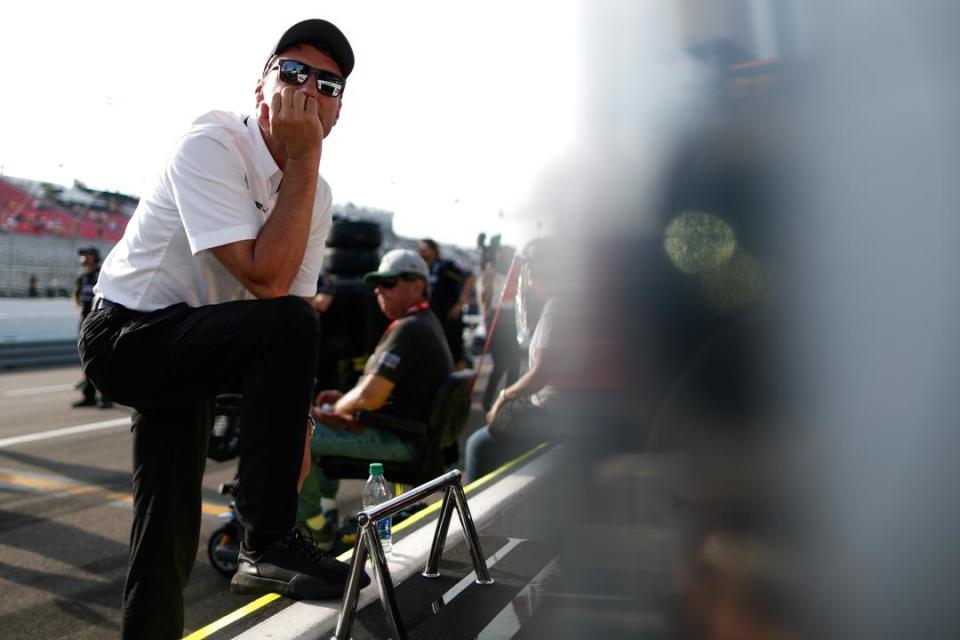
What you just heard is a paddock full of the Team Penske president’s competitors scoffing at the idea that the day-to-day point man for Roger Penske’s racing operations expects the series to believe a team so absorbed by the last minuscule detail – leading to 19 Indy 500s and 17 IndyCar titles – overlooked a serious competitive advantage ingrained in their three cars’ software for close to two months, all by accident.
But if you listen to him, his frankness and tone that oscillated between monotone matter-of-factness and smugness – “If we were trying to get an advantage, why would we do it when the push-to-pass and RPM data is available for everyone to see?” – Cindric is believable. Still, a portion of the paddock and fanbase who will never believe two things:
That some contingency of Team Penske employees either didn’t purposefully load software into its three cars for Josef Newgarden, Scott McLaughlin and Will Power to override limits on push-to-pass parameters on starts and restarts – during which the tools have long been banned – or,
That its drivers – namely Newgarden and McLaughlin – along with engineers from Chevrolet and/or Ilmor and the team itself didn’t come out of St. Pete knowing that the No. 2 and 3 cars had access to (and used) extra boosts of 50 horsepower at times in the race when the rest of the field did not.
And to that crowd, frankly, Cindric doesn’t have an explanation.
“I wish I knew,” Cindric told IndyStar during an exclusive interview about Wednesday’s disqualification of Newgarden and McLaughlin from their 1st and 3rd-place finishes at the season-opening St. Pete race that took place more than six weeks ago, headlining a lengthy list of points penalties and fines that hit Team Penske as hard as any IndyCar team has been in recent memory. “But that deployment isn’t typically looked at. Obviously, if it was, IndyCar would’ve noticed it earlier. And if there was anyone to blame on this (within Team Penske), you’d know by now. We don’t look at this as any one person to blame.
“This is something from a team process perspective, where our process was flawed, and there should’ve been a process to correct this or to have been mindful that this change had existed. Honestly, I’m thankful it happened when it happened because it gives us the ability to try and recover from it, points-wise. But with that being said, it’s such an obvious thing that eventually it was going to come to light – probably sooner than later.”
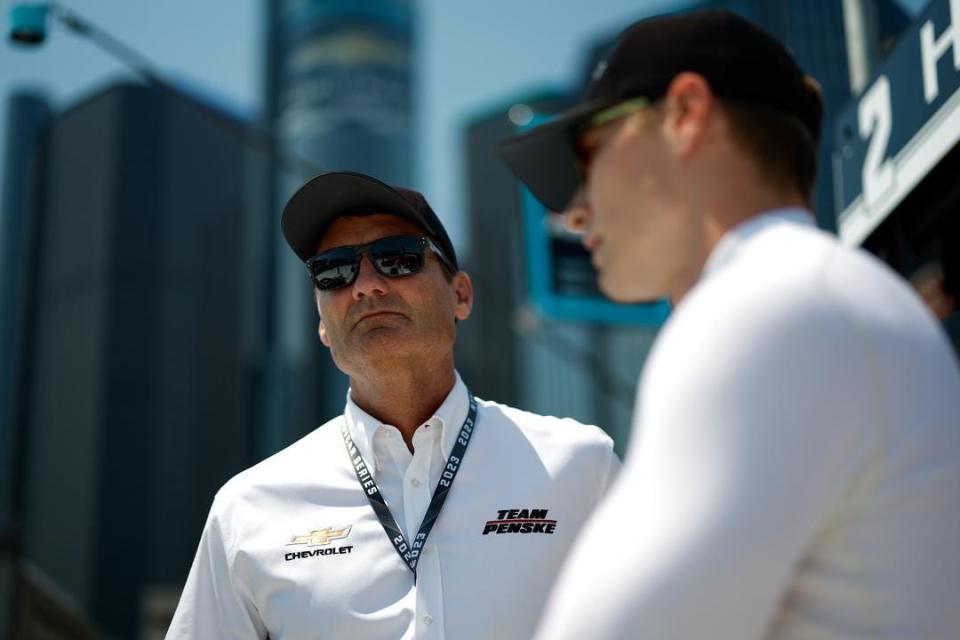
How the illegal code ended up in all of Penske's cars
“I know it sounds like we’re making this up, but it’s the god-honest truth…”
That’s how Cindric began explaining that this illegal piece of code in all three of Penske’s cars dates back to August of last year, when Team Penske and Chip Ganassi Racing ticked off the first of more than 21,000 miles of hybrid system testing for IndyCar’s two engine manufactures: Chevrolet and Honda Racing US. Entering that first test at Sebring with Power in the cockpit, Cindric explained that in order to properly test the overtake function in the hybrid energy regeneration system, Penske engineers purposefully overrode old code in its driver setup files that migrate from chassis to chassis, depending on who’s in the cockpit.
It's why, Cindric explains, the illegal line of code ended up in all three of his teams’ cars at St. Pete when those chassis weren’t necessarily used while pounding thousands of miles of hybrid testing last fall and winter. Push-to-pass could be used whenever the team or driver pleased, as long as an allotment of overtake time was loaded onto the car’s ECU. It made that testing easier and more seamless than having to rely on the test host to have flipped on a beacon that would allow push-to-pass to be used – as is the case during regular season racing action.
Fast forward to the weeks and days leading into the 2024 campaign, where engineers were copying their drivers’ setup files and profiles onto software compatible to the long list of upgrades IndyCar’s machines underwent in recent months, and we reach the key moment.
Those engineers forgot – or purposefully omitted, depending on where you fall on this – to undo that change made in August. And so, when the Nos. 2, 3 and 12 Chevrolets rolled up for Race 1 at St. Pete, they had the ability to engage push-to-pass when other cars couldn't – even during starts and restarts.
According to Cindric, these changes did not affect how much time was at Penske drivers’ fingertips (150 seconds for the race), but just when those two-and-a-half minutes (in maximum 15-second bursts) could be used.
“We can’t (add our own) overtake, but when (any) is in the ECU, and it’s loaded, basically, it’s available all the time,” Cindric said. “There’s a line in the (central logger unit, which communicates with the car’s ECU) that is looking for a number, and we altered that number to just be a constant. That then means that if the ECU is loaded with ‘overtake’, and if there’s a certain signal, then it will work.
“That ‘constant’ in the CLU means (push-to-pass) was always available. There was no ‘signal-canceling’ (like one previous report implied). It’s a lot simpler than people are making it out to be.”
A championship-changing penalty: IndyCar disqualifies Newgarden, McLaughlin from St. Pete
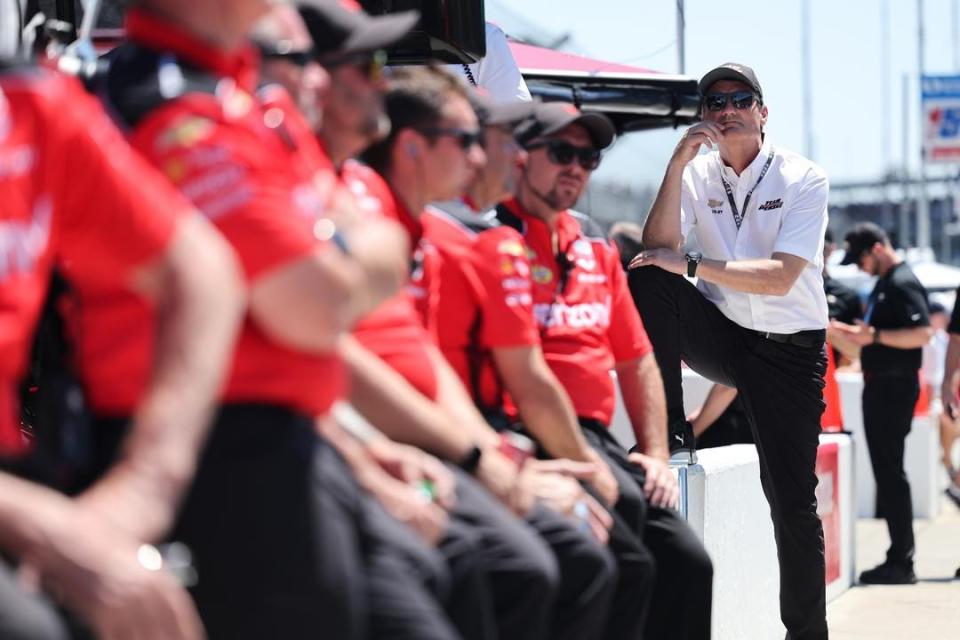
Because of this alleged oversight, Newgarden (three times for a total of 9 seconds) and McLaughlin (once for 1.9 seconds) activated push-to-pass during restarts – both Lap 30 and Lap 72 for Newgarden, only the former for McLaughlin – during a time which their on-track competitors had no such boost at their fingertips. Power was docked 10 points – though it only amounted to a two-point loss after his teammates were disqualified – for his car being set up against the rules.
On the ‘Off Track with Hinch and Rossi’ podcast, co-host James Hinchcliffe noted that Newgarden openly joked with his peers about banging the overtake button in the past at times when the rules, and the systems enforcing them, would’ve made it inoperable. Newgarden has not spoken nor released a statement in the well over 24 hours since the news of Penske’s penalties were made public. He has a scheduled press conference for Friday morning ahead of on-track activity for this weekend’s race at Barber Motorsports Park.
In a statement posted to his social media profiles, McLaughlin wrote Wednesday evening that his single push of the overtake button on the exit of Turn 9 – a spot where push-to-pass “is typically utilized” – he did so purely “out of habit.”
In reviewing 2023 data, Cindric told IndyStar that McLaughlin hit the overtake button seven times in 2023 while it was inoperable (during starts and restarts). Newgarden, by comparison, did so 29 times.
“Simply put, a mistake was made. I have the highest level of integrity, and it is important to protect both my own reputation and that of the team,” he wrote in his statement. “I was not aware of the situation with the software. I did not pass any cars, and I did not gain any time advantage. The data, which IndyCar has, confirms all this information.
“While I accept the penalty, I want to be clear that I did not gain an advantage over my competitors. IndyCar’s competition is the best in the world, and I would take no pleasure in achieving success in any way other than honestly.”
'So many questions': IndyCar fans confused after Team Penske got disqualified at St. Pete
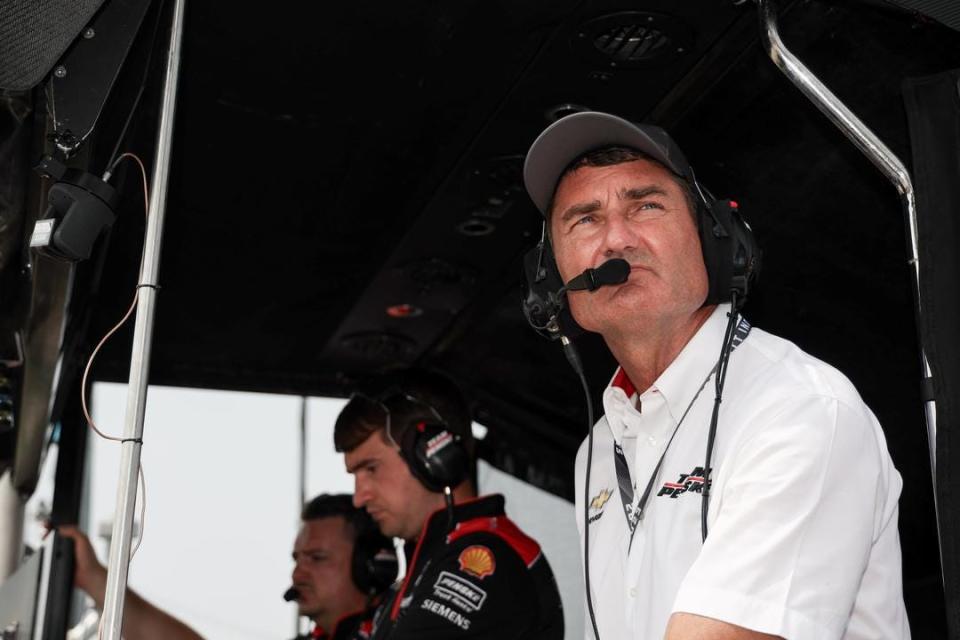
'Why would we think no one would notice?'
How post-race reviews by engineers from Penske, Chevy or IndyCar and drivers’ innate feeling when their cars made unmistakable lurches forward for more than a blink, didn't lead to Penske’s illegal line of code being uncovered, Cindric can’t explain. But he’s a staunch believer that that oversight was negligence at best. It’s an assertion his competitors won't accept, but only a select few truly know the answer.
Whatever the truth behind the scenes, the glitch came crashing down last Sunday morning when, for reasons they’ve yet to explain at length, IndyCar delayed for 10 minutes flipping its own switch that would then allow drivers to start delivering 50 horsepower boosts to their cars with each spray of the button – done during each warmup session to make sure all systems are running properly. And yet, during that 10-minute delay, it was soon apparent that three cars were still testing their overtake systems just fine.
Because the three Penske Chevys had an overtake allotment loaded in their respective ECUs, it didn’t matter that their buttons weren't supposed to be functional – like in starts and restarts. That fact earned Team Penske IndyCar team managing director Ron Ruzewski a trip inside IndyCar’s transporters the minute on-track running was complete.
“We hadn’t realized (the issue), and that’s why, when Ron got called in there and they asked about this, and said, ‘I don’t know what you’re talking about.’ And honestly, he didn’t,” Cindric said. “And so he said, ‘Do you mind if I bring in my engineers, and maybe they’ll understand?’
“And then at that point, it was like, ‘Oh, man, you know what happened was this…’”
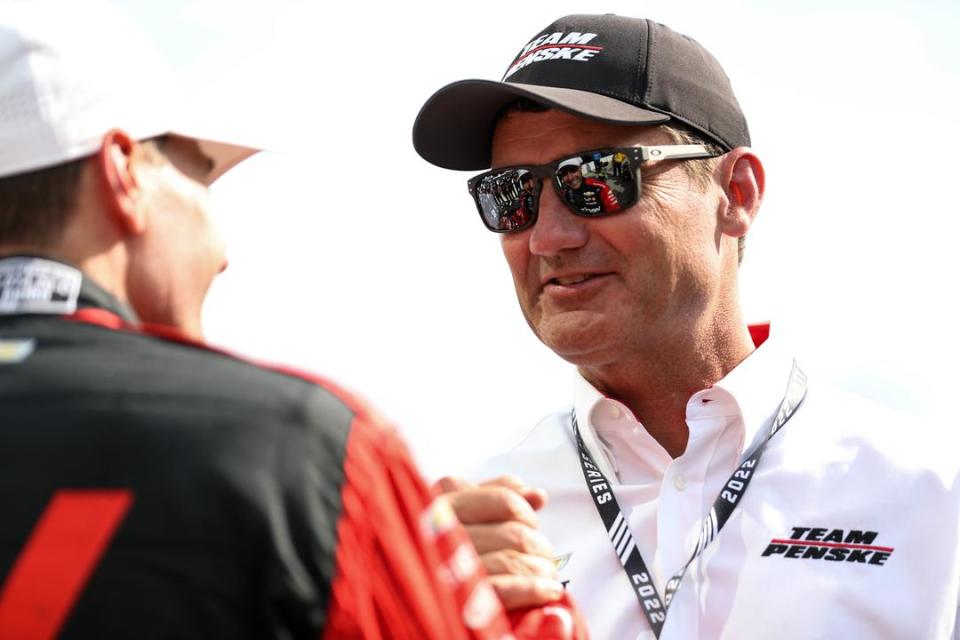
Together, IndyCar officials and Penske brass made certain all three of the cars were in compliance for the race just hours later, where Newgarden (4th) and Power (6th) ran near the front all day. “But then after the race, people started talking about it, and we started thinking, ‘Well, shoot, this thing has been in since August of last year, so what happened at St. Pete?’” Cindric said. “Because the drivers will hit the overtake button even when it’s not available.
“Had this not happened (during Long Beach warmup), I’m sure we would’ve going through Long Beach and raced it exactly the same way, and at some point in time – I wouldn’t have been surprised if after Long Beach we were talking about it.”
Cindric points out that the overtake advantage would’ve been glaring, had any of his drivers used the button immediately upon the start of the race, where after Lap 1, their remaining overtake allotments would’ve read ‘147’ or ‘145’, while the rest of the field would’ve remained steady at ‘150’ before the system kicked on for everyone at the alternate start-finish line. That McLaughlin and Newgarden both did so on restarts when the numbers up and down the grid were all jumbled, it wasn’t surprising for the glitch to go unnoticed in-race.
“The difficulty with this whole situation is that people expect we were trying to circumvent the rules with the software, and honestly, we weren't,” Cindric said. “Why would we do it when the push-to-pass and RPM data is available for everyone to see, and why would we think that no one would notice?
“Our competitors can see that. IndyCar gets all the data files after every race, so these are things you can’t hide. To say we purposefully did this to get an advantage, I don’t know how you can come to that conclusion, unless that’s what you want to believe.”
This article originally appeared on Indianapolis Star: Tim Cindric says copy-paste error led to penalty, double DQ for Penske

